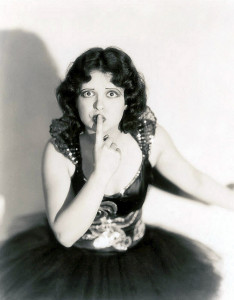 One comment I hear often is that an important story element is too complicated to explain without resorting to dialogue. Now, yes, the fastest way to provide backstory is through dialogue. Another great device is flashbacks, which have become controversial. Both devices run the risk of being too obvious, plus dialogue can sound very clunky if it’s too “on the nose”. But before dismissing or eliminating an important aspect of your story for fear that it can’t be told simply and effectively, I suggest that you open yourself up to the possibility that it IS possible to do so — you haven’t discovered the solution yet. After all, as soon as you believe that something is impossible, you make it into a self-fulfilling prophecy. Think of it as a creative challenge. Here are some ideas to help you stretch your narrative muscles.
One comment I hear often is that an important story element is too complicated to explain without resorting to dialogue. Now, yes, the fastest way to provide backstory is through dialogue. Another great device is flashbacks, which have become controversial. Both devices run the risk of being too obvious, plus dialogue can sound very clunky if it’s too “on the nose”. But before dismissing or eliminating an important aspect of your story for fear that it can’t be told simply and effectively, I suggest that you open yourself up to the possibility that it IS possible to do so — you haven’t discovered the solution yet. After all, as soon as you believe that something is impossible, you make it into a self-fulfilling prophecy. Think of it as a creative challenge. Here are some ideas to help you stretch your narrative muscles.
Category: Writing Exercises
Tips on Accepting Feedback
No matter how well you write, few of us has such exquisite control over our material that we can be 100% sure of how our stuff reads to an outside party. This is particularly true for new material and comedy. In short, we spend so much time alone, scribbling away, that we may lose perspective on how a piece might impact a reader.
Hence the need for a trusty outsider who will provide useful insights. Sometimes, though, you can have too much of a good thing; too much feedback can be overwhelming and even debilitating. How to go about integrating this pile of comments? And is every single comment necessarily useful and on point? Distinguishing a pertinent comment from one that’s completely off can be a trick in and of itself.
Here are some tips on handling feedback:
From Bad to Great: How to Write Fresh Dialogue
One of the hallmarks of a good script is great dialogue. While it’s true that you have to have an ear for it, it’s also true that it is a skill like any other. So, even if you’re no Preston Sturges and regardless of your innate ability, you can exercise that muscle and improve.
A good place to start is to analyze what makes bad dialogue. We all know it when we hear it, but identifying why it doesn’t work is a great place to start.
Continue reading From Bad to Great: How to Write Fresh Dialogue
How To Write Believable Female Characters
You don’t want to be that guy who writes cookie-cutter women. As a good writer you want ALL your characters to be real, believable, and relatable. After all, the more your audience identifies with your fictional peeps, the more captivated they’ll be by your story.
I know it’s a challenge, but just because you only have one X chromosome doesn’t mean you can’t breathe life into your women. Other male writers were able to pull this off back when most men considered women lesser creatures and hardly bothered to care about what we were thinking. The effort can be rewarding. Just ask Flaubert. Emma Bovary is such a compellingly human character that he went down into the annals of literary greatness. So here are some tips:
